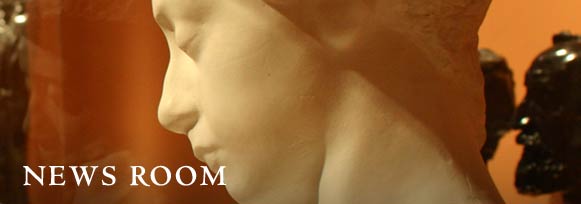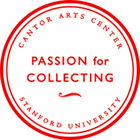Exhibition Showcases Art from the Renaissance to WWII
Dürer to Picasso
November 12 – February 15, 2009
Stanford, California - Cantor Arts Center at Stanford University presents “Dürer to Picasso,” November 12, 2008 - February 15, 2009, the first in a yearlong series of exhibitions spotlighting the museum's collection. With 100 works from the Renaissance to WWII, “Dürer to Picasso” represents the top tier of art acquired through gift, purchase, and bequest since the museum's reopening in 1999, after a closure forced by the 1989 Lomia Prieta earthquake.
“These works by 50 European and American artists, gathered together in one space, show what the museum collects, and why. The exhibition demonstrates how the Center's curators seek quality, relevance to the overall context of the collections, and teaching opportunities,” explained Betsy G. Fryberger, the Cantor Arts Center's Burton and DeeDee McMurtry Curator of Prints and Drawings. “The exhibition's labels incorporate the voices of curators, collectors, and students. Visitors can use additional written and audio materials in the gallery if they want to learn about the works on display.”
Major paintings and sculptures form the central axis of the installation. François-André Vincent's late-18th-century painting of Zeuxis and his models, greets visitors at the exhibition entrance. This shows an artist at work in a scene drawn from classical text, and the composition centers on the artist, his canvas, and his models. “Summer Landscape,” a bucolic view of the nation's still sparsely populated agrarian land, is by Asher B. Durand, an eminent 19th-century landscape painter of the United States. Pablo Picasso's painting of a young woman, “Courtesan with Hat,” 1901, presents its subject with bold patterns and colors. Hans Arp's smooth, elegant white marble sculpture “Silent,” 1942, with its biomorphic forms, carries abstraction further still.
Works on paper complete the exhibition. Sixteen engravings by Albrecht Dürer, the greatest painter and printmaker of the Northern Renaissance, reveal his humanist insights expressed through rare technical virtuosity. Other groupings of prints include etchings after Pieter Breughel the Elder of mountainous landscapes, lithographs of John James Audubon's animated quadrupeds, and symbolist visions by Odilon Redon.
Edvard Munch's color woodcut, “Evening (Melancholy)” of 1902 is haunting in its depiction of solitude, which for the artist often verged on despair. Munch's use of simplified forms and wood grains make his work fresh and expressive. The new directions of 20th-century art can be seen in a cubist still life by Georges Braque, the fragmenting world of Wassily Kandinsky, and the surrealism of Kurt Seligman.
“Dürer to Picasso” is made possible by the Robert Mondavi Family Fund, the Anne and Arthur Dauer Fund, the Melitta Vaughan Memorial Fund, and Cantor Arts Center Members.
# # #
VISITOR INFORMATION: Cantor Arts Center is open Wednesday – Sunday, 11 am – 5 pm, Thursday until 8 pm. Admission is free. The Center is located on the Stanford campus, off Palm Drive at Museum Way. Parking is free after 4 p.m. and all day on weekends. Information: 650-723-4177, museum.stanford.edu.




